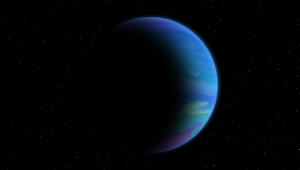It’s days like today that I miss the Greek and Roman pantheons. It was the golden age of star, planet and galaxy naming. Mars, Saturn, Andromeda … they were myths written across the skies.
These days, it’s a collection of someone’s name, numbers of letters – thoroughly unromantic … unless of course there was a fabulous star called Wild-1.
Have you heard of Gliese-667C? Possibly not, and even if you had it would slide off your brain like oil poured onto water. People first became interested in this star when it was discovered that it had a habitable planet.
Realtors talk about “location, location, location”. A planet’s ability to sustain life also hinges on location. Earth exists in an area around the Sun called the “Goldilocks Zone”, where it is neither too warm nor too cold. The reason we have carbon-based life on Earth is because we have liquid water – if we were closer to the Sun, it would be hotter and the water would evaporate. If we were further away, it would freeze. And yes, habitable also means the possibility of other life.
Scientists are very interested in Goldilocks Zones, because planets in these areas could sustain life. Well, I call them scientists, but they are more than that – they are planet hunters. I have this (admittedly erroneous) vision of planet hunters as modern-day explorers, swash-buckling with a telescope.
Let’s go back 20 years. Twenty years ago, we thought, rather egocentrically, that the planets in our solar system were unique. But we couldn’t have been further from the truth. A study released in 2011 found that planets in the Milky Way are the rule, rather than the exception. So when you look up at the night sky (when you’re not in a big city and can actually see it), know that every star you are seeing probably has a planet.
But now, thanks to planet-hunter Kepler, we know that there are millions upon millions of planets in the universe, and that nine of them are habitable. Kepler, bless its little metallic socks, went out of commission earlier this year.
So, why this is exciting right now, is the discovery of a world first: Gliese 667C has three habitable planets orbiting it. While we already knew that the planets were there, it wasn’t known that they could support life. The re-examining of the existing data (which once again shows the vigour necessary in scientific inquiry) was undertaken by a team of astronomers led by Guillem Anglada-Escudé of the University of Göttingen, Germany and Mikko Tuomi of the University of Hertfordshire in the United Kingdom.
“We knew that the star had three planets from previous studies, so we wanted to see whether there were any more,” says Tuomi. “By adding some new observations and revisiting existing data we were able to confirm these three and confidently reveal several more. Finding three low-mass planets in the star’s habitable zone is very exciting!”
“The number of potentially habitable planets in our galaxy is much greater if we can expect to find several of them around each low-mass star — instead of looking at ten stars to look for a single potentially habitable planet, we now know we can look at just one star and find several of them,” adds co-author Rory Barnes, from the University of Washington in America.
For many scientists around the world, this means that they may be returning to data that they thought could be filed and forgotten about.
For us arm-chair planet hunters, it means there might be even more habitable planets than we thought, and they might be even closer by.
But before you get your hopes up, it is 22-light years away. A light year is the distance it takes for light to travel in one year. To round it off, 20 light years is 189 000 000 000 000km. A rocket, which travels at about 40 000km/h would take near 600 000 years to get there.
Forgive me for re-using an analogy (if you’ve read my blog posts before): If humans, hypothetically, decided to start a colony on Gliese 667C (and it were 20 light years away for my mathematical convenience) – and the average global child-bearing age is 25 (although it might be significantly lower on this hypothetical colonisation mission as sex would be one way to pass the time) – the rocket would have been home to more than 21 000 generations of humans by the time they arrive on the other side, possibly very inbred.



